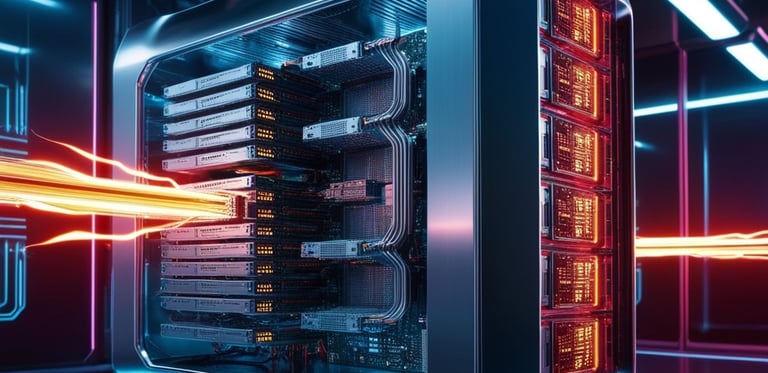Memory’s Quantum Leap: Fueling AI’s Race to Learn
Memory Matters #0


Were all talking about AI when the real conversation is how to speed up the memory subsystem to invoke higher performance LLM transfers
In an nuclear fueled AI research lab a team of scientists are pushing the boundaries of large language model (LLM) capabilities. As they work on developing the latest GPT-6 class model, predicted to be the largest LLM by the end of 2025, they’ve encountered a significant challenge: the memory subsystem can’t keep up with the massive data transfers required for the model’s hundreds of trillion parameters referencing quadrillions of tokens.
The Memory Bottleneck
The lead engineer, frustrated by the slowdown, turned to her colleagues and said, “We’re on the cusp of a breakthrough, but our memory systems are holding us back. We need to focus on advancing the latest memory technologies to unlock the full potential of these models.”
To achieve their goal of creating an LLM capable of advanced reasoning and multimodal processing, the team realized they needed to revolutionize the memory technology interface, making it:
Faster
More efficient
Capable of handling enormous data demands
Reasonable to get to market quickly
Due to current memory bottlenecks among other things, AI foundational teams are focusing on qualitative improvements rather than just increasing parameter count.
The Future of AI and Memory
While the above story is fictional, it represents the real challenges facing AI development. GPT-5++ and beyond are predicted to have:
“Ph.D level intelligence” for focused tasks
Increased memory needs due to larger parameters
Improved reasoning capabilities
Multimodal functionality (processing text, audio, and visual content)
Did you know?
GPUs aside, memory cost and power is a large percentage of the total computer system envelope.
GPT-4, with various versions released in 2024, reportedly took about 4-7 months to train. GPT-5++ is expected to require even more time.
Key Facts
AI training is driving significant demand for DDR, specifically high-bandwidth memory (HBM).
The AI workflow involves a continuous loop of data consumption and generation, requiring various types of storage and memory products.
AI is projected to contribute $15.7 trillion to the global economy by 2030.
Looking Ahead
As we move into the new year, let’s take steps together toward understanding where this data takes us. I am starting a newsletter that will discuss current technical AI industry trends with a focus on the system and sub-system memory based interactions.
Sources
Forbes: AI Driving Memory and Storage Demand
National University: AI Statistics and Trends
Reddit: GPT-6 in Training Discussion
Linked to ObjectiveMind.ai for increased content distribution
This article is based on my personal views and have no relation with my professional work
